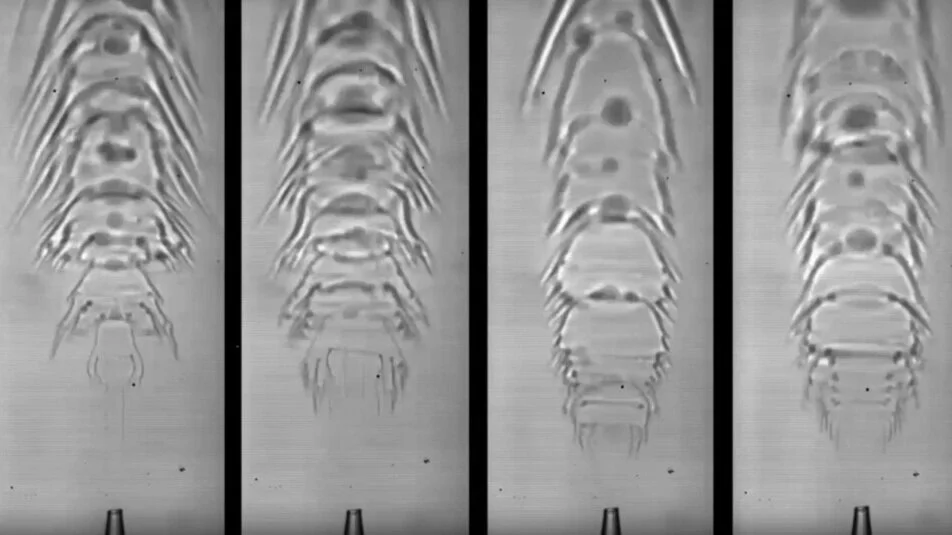Finding Futures Way, 2016
Ground Floor Gallery, Run Run Shaw Tower, Hong Kong University Faculty
of the Arts.
SOUNDSCAPE INSTALLATION & EXHIBITION
The exhibition runs between external glass doors and a set of lifts within a faculty building. Sounds of people from the cityscape periodically shuffle to-and-fro, footfall that reverberates on hard echoic surfaces bringing attention to our listening. Our sonic odyssey at HKU brings together sounds of the human hive, city activity, and a bush of wild bees Apis Cerana, recorded on the nearby mountain side, beyond the confines of architectural space.
We set about transforming the length of the gallery into an hour-long immersive experience, into which people entering were invited to slow down and spend time contemplating the composition of contrasting sonic environments and exhibits, before moving on.
Continued..
The design is a 12-speaker system. Two super stereo quad sets create immersive sound worlds at each end of the gallery: people in the city at one end and bees in a hive at the other. Another four stereo speakers make an intermediate sonic environment bridging these comparative worlds with the sharp percussive metallic signal of a Hong Kong pedestrian crossing. The foreground cycles through the sound system from city to hive and back. The tempo of the cycle varies, as does the texture and content of the material itself
Living at wholly different sonic scales, the bees and the city’s human inhabitants are normally unaware of each other. Bee sounds are tiny and insignificant in comparison to the immense scale and thunder of the city’s soundscape. Sculpting with these sounds we were able to rebalance this (in)difference, making visible and juxtaposing the contrasting social spaces of city and bee hive. Each passing visitor is immersed for a short period in a swarm of sounds.
Anthony Schrag establishes a foundation for an understanding of engaged art practices that undertake to ‘work-with-people’.
He defines areas of influence within institutions, community and politics that we can use to understand some wider implications of Finding Futures Way. The hosting institution for Finding Futures Way is the university, within which we chose a transitory ground floor gallery space for the soundscape, which is an integral part of the social space of the Arts Faculty.
The community in this context, is the collaboration we undertook with students and staff from various faculties and other visitors, and was expanded importantly through the architecture faculty, where our work connected with sound and materials research and latterly with Sounding Architecture a publication initiated by our friend and colleague Thomas Tang.
As political activism Finding Futures Way expresses the plight of bees within the metropolis, somehow highlighting their miraculous survival in the surrounding landscape. We also focus visitors on the global / political / environmental inter-dependence humanity has with these captivating and friendly pollinators. Continued..










By immersing the visitor in a composition of scavenged sounds, we invite everyone to reflect on the urban sounds of mass human activity and to compare these to the sounds of the bee colony, and through this listening perhaps hear a call to greater environmental awareness and sensitivity toward our shared soundscape. The Finding Futures Way legacy has been to stimulate discussions about the future possibility of beehives installed on the rooftop of HKU, a progressive trend in many other world cities.
Dominating the gallery wall at the beehive end of the gallery is the ‘Billboard Bee’ which is magnified and printed at larger than human scale, also exhibited is an ancient Chinese character for mi feng - bee. On the wall of the crossing space, two videos were projected. We collaborated with engineers and biologists to create these exhibition works, experiments with microscopic fluid jets that animate the characteristic vibrations of the bee and city sounds that we collected.
Critical friend / Mike Fedeski



